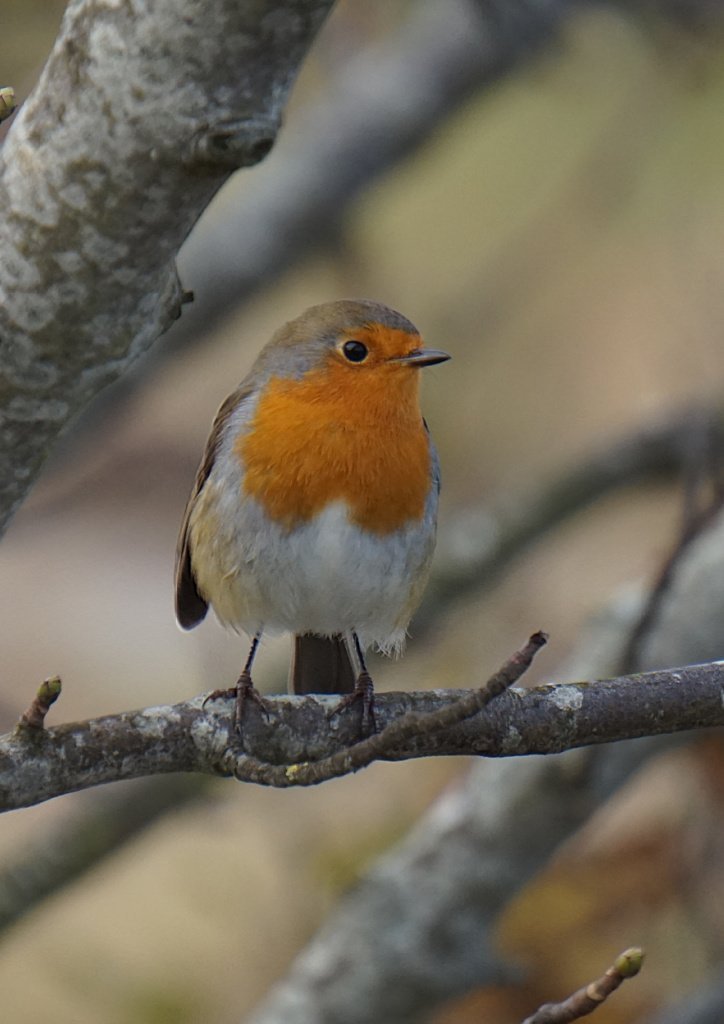
A Cheerful Bird for the Winter
The robin in the garden likes the thick screen that shelters us from the westerlies, even though the hedge seems less secure now that its hawthorn leaves are down. It’s a mixed hedge as well as hawthorn, with beech and holly to give all year interest. But winter’s bareness is on it.
Less cover in the garden means that this resident is also more conspicuous. He’s with us all year, but this is when he gets noticed, our local robin.
As I howked around in the border, he perched there on the handle of the spade, flicking his tail like he was posing for Christmas card.
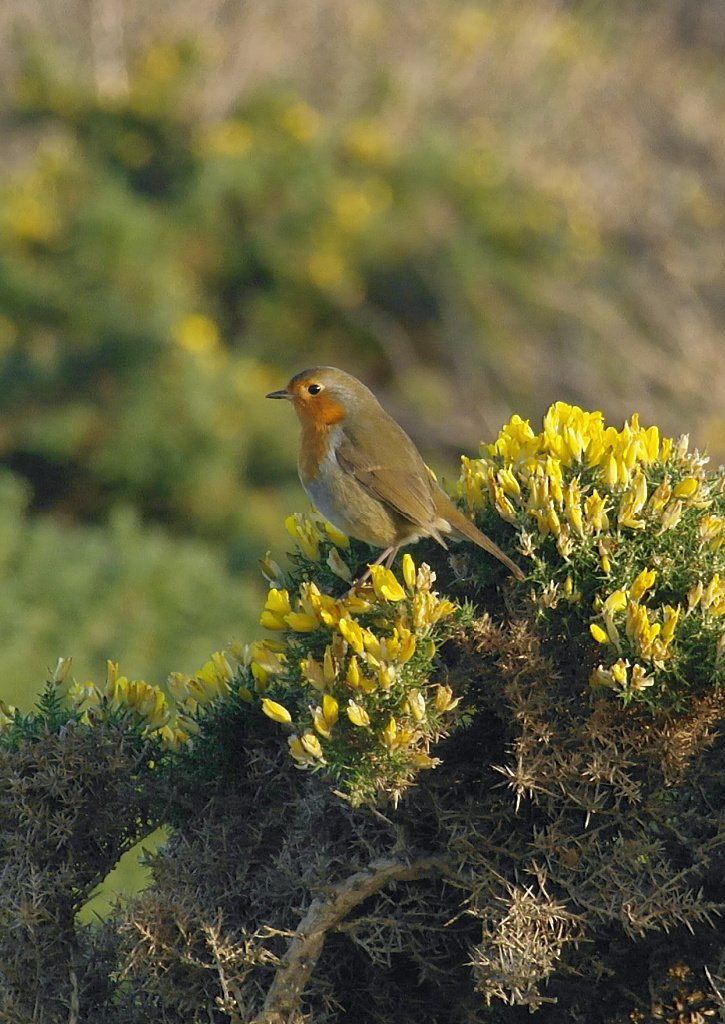
The robin in the garden was really only asking me to get a move on and strip away some more of that turf. (Hateful job – but if you are extending a bed…) He was waiting to get amongst the wee worms in the soil.
In olden times, long before gardens, his ancestors would have hung around the grazing beasts as they foraged in the woodland. Before that, they hung about with wild boar.
These days its gardeners who provide the disturbed soil through which he hunts.
I was thinking that he really leads a double life. A solitary, if aggressive, kind of existence under cover of spring and summer. He kind of skulks around as well, so that you’re not sure if you actually spotted him or not.
Then when all the other birds fall silent, he turns extrovert and cheers up the garden with that special song, sort of wistful, in a minor key.
But a singing robin in the garden I always take as the first sign of autumn and the shortening days. (I’m not sure if I’m about to get sentimental here – or just plain depressed!)
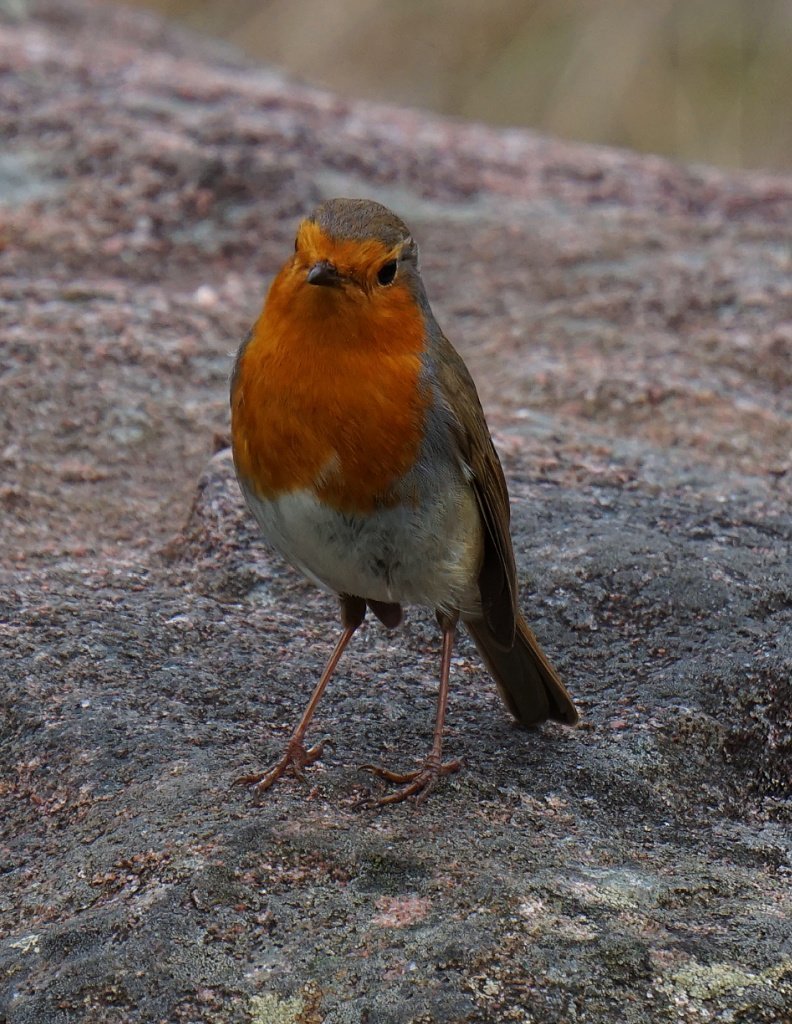
This is a mountainous robin, actually near Beinn Eighe in Wester Ross.
In fact, I’m not even sure if it is a ‘he’. A birdwatching friend tells me that both male and female robins fight to hold territory, singing to warn off other robins. If another robin ventures on to the patch, the owner really puts the beak in.
Our resident robin at the moment, for some reason, has been feuding for weeks now with the garden’s hedge sparrow, an otherwise meek and furtive little mousey-bird (though I kind of identify with him).
If you’re one of these trompe l’oeil garden designers who play about with mirrors in the garden to make the space look bigger, then spare a thought for the local robin. Actually, if you’re any kind of garden designer then why are you reading this at all?
No, wait, though: robins are very aggressive and will hurl themselves against their reflections until they kill themselves. What is a mirror doing in a garden anyway?
Apparently, there are 7.4 million robin territories in the Untied Kingdom according to the website of the heavyweight bird organisation the British Trust for Ornithology. Take a look at BTO BirdFacts | Robin.
There’s quite a bit of folk lore about robins. To harm one brings bad luck and it is also associated with other religious stories. Weirdly, up to 1861, postmen were dressed in red coats and sometimes were called ‘redbreasts’ or ‘robins’. Then Xmas cards were invented, often featuring, yes, of course, robins. So you got robin cards delivered by, well, you get the drift.
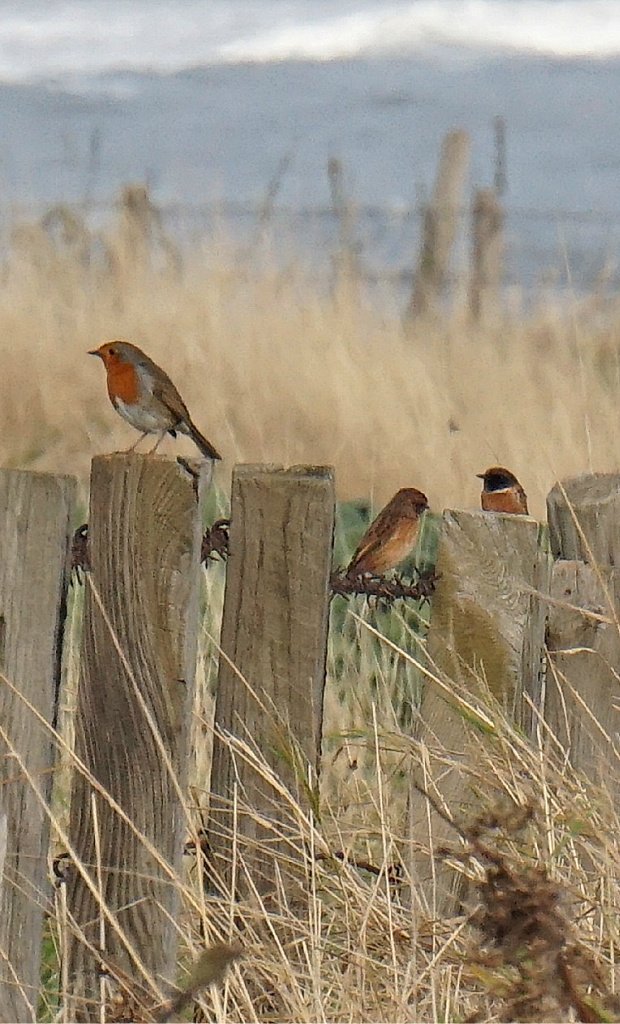
I photographed, again, by the coast, having a perfectly civilised chat with a couple of chats. Stonechats (Mr & Mrs), to be exact.
Glasgow’s coat of arms has a ‘robin proper’ on it to recall the bringing back to life of a robin by St Kentigern.
Quite the oddest story about a robin I heard some years from a farmer who was a neighbour. He looked me straight in the eye and said. ‘The wife’s got nae fruit on her trees this year – and it’s the robins tae blame.’
I asked him, in a roundabout way, why this insect and worm-eating little chap should affect the set of the trees.
‘Weel, ye ken whit they say. Ye’ll get nae fruit if ye’ve robins.’ And he refused to be drawn further.
I puzzled over this weird conversation for a while until it struck me that this man of the soil was probably mixing up the activities of the bullfinch with the robin.
After all, they both have sort of red breasts, though the bullfinch is much ‘pinkier’. However, it was a bit of a downer that this ‘guardian of tomorrow’s countryside’ couldn’t tell them apart.
It’s true, the bullfinch – but definitely not the robin – will remove fruit-tree buds at the rate
of 30 to 40 per minute, methodically working its way from the tip of a fruit tree branch, right down to the older wood with fewer buds, then fly out to another tip and start again.
Mind you, if you’ve got fruit trees on your plot don’t get too fashed about this as researchers have also shown that half the buds can be taken off a pear tree and it won’t affect the eventual yield. That’s Nature’s way, I suppose.
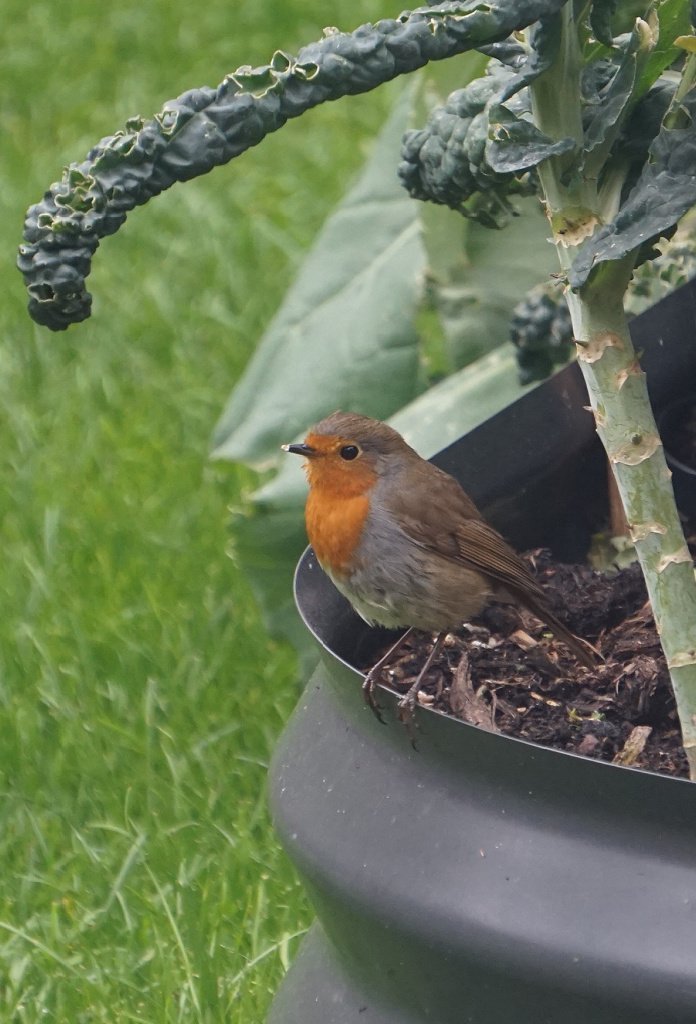
Anyway, the local robin is definitely not guilty. If you have the stomach for it, the way to a robin’s heart is to pop down to your local pet shop and buy a poke of mealworms.
Your neighbourhood robin loves them and will soon get very tame. (S)he will come to your hand if you have the patience. (I’ve done this with a blackbird as well – but that’s another story.)
On second thoughts, settle for a bag of dried mealworms – widely available now since bird-food has become big business.
You can always soak them in warm water beforehand, though somehow I’m not sure if I’m going to add ‘Reconstitute mealworms’ to my gardening to-do list.
Anyway, after loitering in the kitchen, camera at the ready, I managed to photograph this year’s robin. More on Scottish birds on that link.
Our robin is much more welcome than this feathered garden pest.
